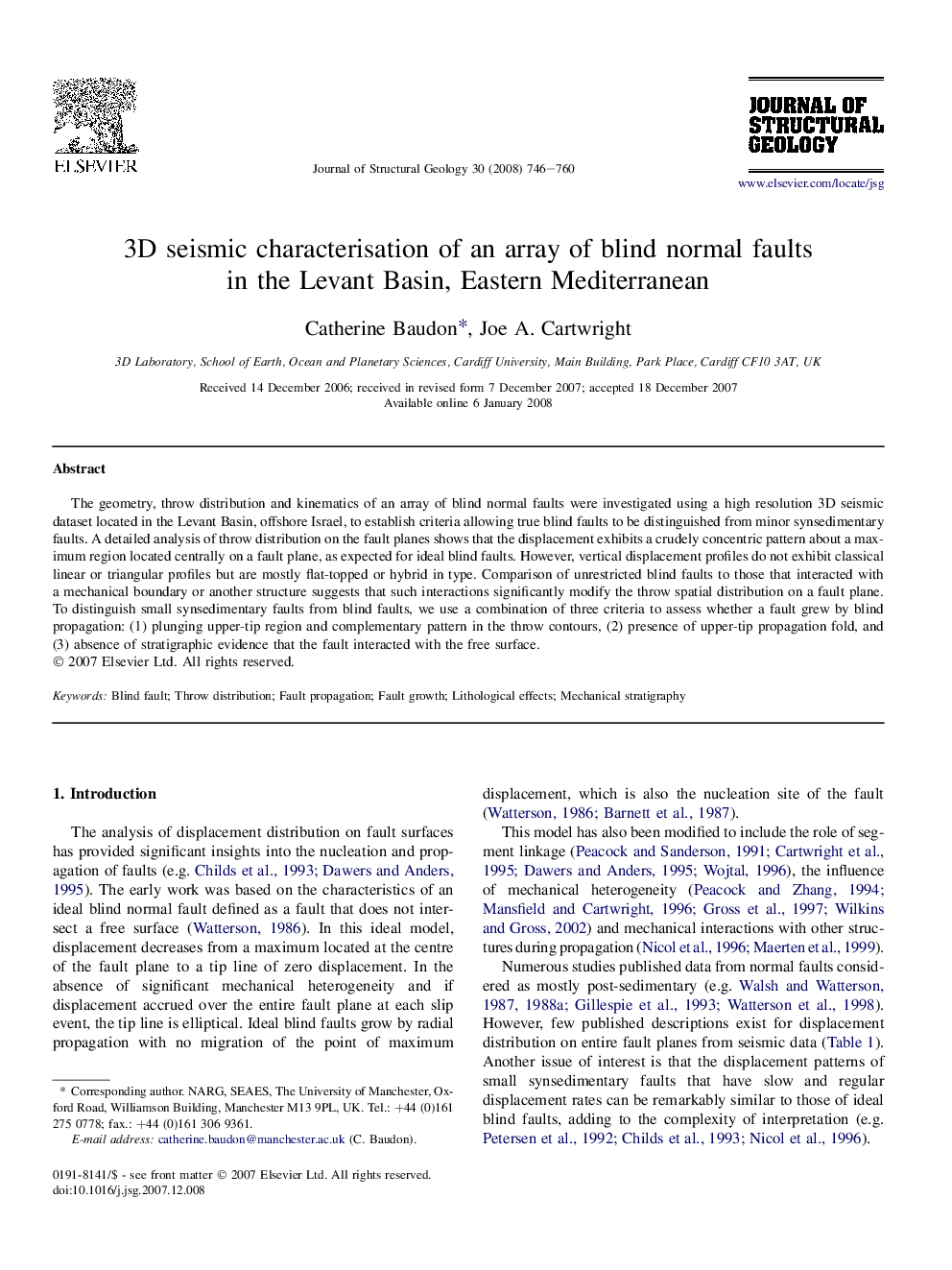| Article ID | Journal | Published Year | Pages | File Type |
|---|---|---|---|---|
| 4733708 | Journal of Structural Geology | 2008 | 15 Pages |
The geometry, throw distribution and kinematics of an array of blind normal faults were investigated using a high resolution 3D seismic dataset located in the Levant Basin, offshore Israel, to establish criteria allowing true blind faults to be distinguished from minor synsedimentary faults. A detailed analysis of throw distribution on the fault planes shows that the displacement exhibits a crudely concentric pattern about a maximum region located centrally on a fault plane, as expected for ideal blind faults. However, vertical displacement profiles do not exhibit classical linear or triangular profiles but are mostly flat-topped or hybrid in type. Comparison of unrestricted blind faults to those that interacted with a mechanical boundary or another structure suggests that such interactions significantly modify the throw spatial distribution on a fault plane. To distinguish small synsedimentary faults from blind faults, we use a combination of three criteria to assess whether a fault grew by blind propagation: (1) plunging upper-tip region and complementary pattern in the throw contours, (2) presence of upper-tip propagation fold, and (3) absence of stratigraphic evidence that the fault interacted with the free surface.
